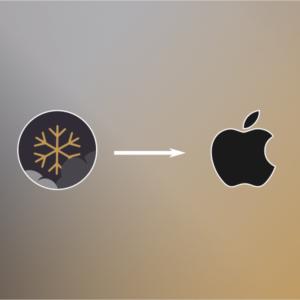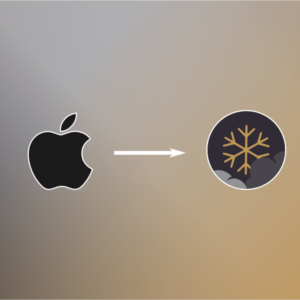Incognito mode and Private Browsing
Nearly all browsers offer the option to browse the internet privately. These options are called private or incognito mode. Commonly, developers build a nice UI around it showing a guy with a hat and stick-on mustache like the one shown below. The big misconceptions here is that turning on incognito mode is beneficial to your online privacy.
The purpose of incognito is to leave no trace on your computer. This was helpful at the time we still had one computer per household, and the following user would see what searches one entered. Nowadays, everyone has his personal device, so the threat of leaving an embarrassing search history or open tabs is not that important anymore. Since all the removed data are local data, this doesn’t change anything when it comes to the data we share online. (There are possibilities for websites to look at your history, more info here.)
By removing local data that was accumulated during your searches, the browser also eliminates cookies, which get stored in your browser. This comes very handy when you try to buy your plane ticket online. Many airlines save cookies on your device when you look around their page. Suddenly, a couple of hours later when you check again, they pushed your price up.
Why isn’t it enough?
So far we looked at local data. However, to really attain the privacy that is usually praised by those browsers, we have to control the data that actually find its way onto the internet.
An excellent private browser also protects you from the many fingerprinting techniques used. Blocking fingerprinting methods like canvas fingerprinting, audio context, social media buttons, and tracking scripts are all part of a real private mode.
Last but not least, your IP address makes you still almost uniquely identifiable. The IP address is like the address on your mail; it is necessary to receive data. You can protect your IP address as well as your internet traffic by using a VPN. A VPN makes queries and transmits data on your behalf. You don’t get directly in touch with the website, and the website only sees the VPN server. Your internet service provider and other third parties cannot monitor what you do online because your device encrypts the data before sending it.
SnowHaze browser protects your privacy by blocking and spoofing fingerprinting techniques. SnowHaze VPN uses government-grade encryption and is the only VPN service that has no possibilities to identify it’s users. In combination, you have all the tools necessary to take back control over your data online. So next time you see a guy with a hat and stick-on mustache, it might just be for the looks and not for your benefit.
Science and Incognito mode
The university of Chicago did a research about incognito mode with 450 subjects and found that:
- “46.5% of subjects ‘thought bookmarks saved in private mode would not continue in later sessions,’ when they actually do.
- “40.2% of subjects thought websites would not be able to determine a user’s location,” while in private mode. You can make it harder to estimate your location if you use a VPN.
- “27.1% of subjects considered private mode offered more protection against viruses and malware than standard [mode.]” This is a misconception since any files you download and open on your computer could still be affected with malware or viruses.
- “22.0%, 37.0%, and 22.6% of participants falsely believed that ISPs, employers, and the government would be unable to track them when they used private mode.” If you’re on someone’s network, chances are they can see what you’re doing
The entire study can be found here.




